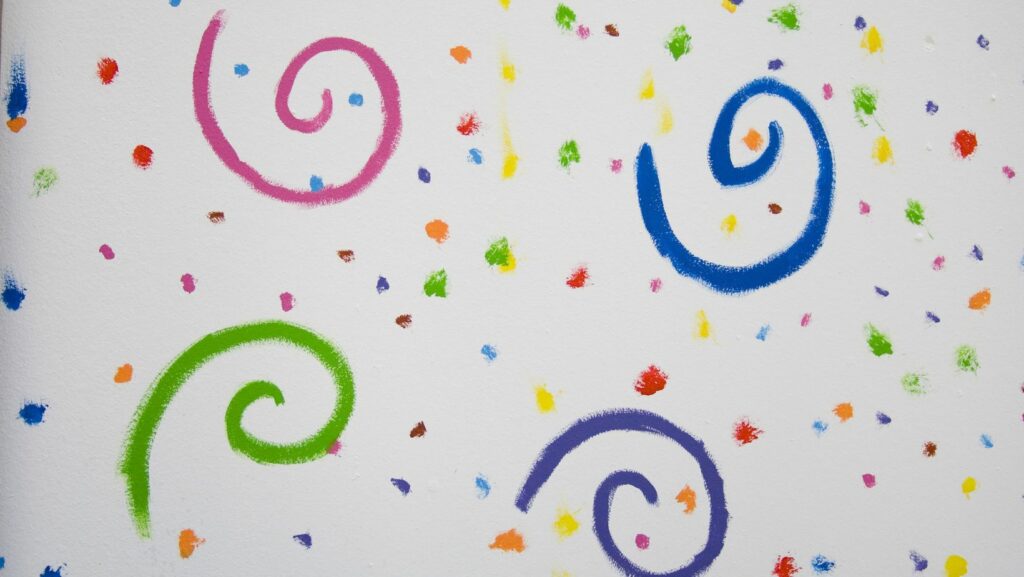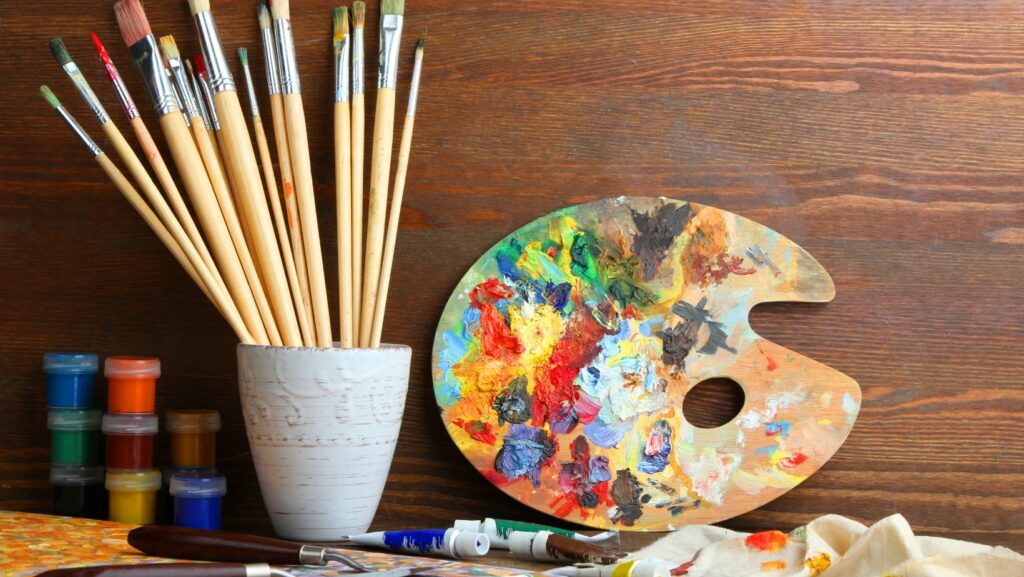Dot Art for Kids
- Encourages Creativity: Dot art allows children to explore their imagination through vibrant colors and patterns, fostering individual artistic expression.
- Develops Fine Motor Skills: The precise movements needed for dot placement enhance hand-eye coordination and grip strength, contributing to improved writing and drawing skills.

- Versatile and Accessible: Dot art can be done with various mediums and is suitable for different age groups, making it a perfect activity for classrooms, playdates, or home environments.
- Educational Benefits: This art form introduces concepts like symmetry, shape recognition, and color theory, enriching children’s cognitive skills while they create.
- Safety First: Ensure all art supplies are non-toxic, supervise children during projects, and maintain a clean workspace to promote safe creative practices.
- Diverse Project Ideas: Children can engage in numerous themed dot art projects, from nature scenes to holiday crafts, enhancing their enjoyment and artistic development.
Dot art for kids is a vibrant and engaging way to spark creativity and develop fine motor skills. This fun art form encourages children to explore their imagination while learning about colors, patterns, and shapes. Using simple dotting techniques, kids can create stunning masterpieces that reflect their unique personalities.
As kids dive into the world of dot art, they not only express themselves artistically but also gain confidence in their abilities. Whether they’re using paint, markers, or digital tools, dot art offers endless possibilities for exploration. This hands-on activity is perfect for classrooms, playdates, or quiet afternoons at home, making it a favorite among parents and educators alike.
Overview of Dot Art for Kids
Dot art for kids engages young artists in a fun and interactive way. This art form encourages creativity through simple dotting techniques, allowing children to experiment with colors and patterns. Using tools like dot markers, brushes, or even fingers, kids can produce unique designs that enhance their artistic expression.
Dot art promotes fine motor skills, as children practice precise movements while placing dots on paper or canvas. This process helps in developing hand-eye coordination and control. Furthermore, dot art can foster cognitive skills by introducing concepts such as symmetry, shape recognition, and color theory.
Whether in classrooms or during playdates, dot art is versatile. Children can work individually or collaboratively on projects, making it a social activity that nurtures teamwork. The tactile nature of dot art also makes it an accessible medium, suitable for various age groups and skill levels. Overall, dot art provides a platform for kids to explore their imagination while building essential art-making skills.
Benefits of Dot Art
Dot art provides numerous benefits for children, promoting creativity and skill development. Engaging in this art form fosters various cognitive and physical abilities essential for young artists.
Enhancing Creativity
Dot art stimulates children’s creativity by offering a free-form approach to artistic expression. Using simple techniques, children can combine dots to create imaginative designs and patterns. This medium encourages exploration of color mixing, shape creation, and unique combinations. As children experiment with different tools and styles, their self-expression evolves, leading to the development of personal art styles. Participating in dot art allows kids to think outside the box, enhancing their overall artistic capabilities.
Improving Motor Skills
Dot art significantly improves fine motor skills in children. The precise movements required to place dots enhance hand-eye coordination and grip strength. Through repetitive actions, children develop dexterity and control, which translates to better writing and drawing skills. Engaging in dotting activities also promotes patience and focus, as kids carefully position their dots to form patterns or images. Overall, dot art serves as a practical exercise for refining essential motor skills while providing a fun and enjoyable experience.
Tools and Materials Needed
Dot art for kids requires specific tools and materials to enhance the creative experience. These supplies ensure that children can freely explore their artistic potential while maintaining safety.
Recommended Supplies
- Dot Markers: Dot markers, designed for easy grip, allow kids to create vibrant dot patterns.
- Acrylic Paints: Acrylic paints provide rich colors and can be applied with dotting tools or brushes.
- Cotton Swabs: Cotton swabs serve as effective tools for making smaller dots and fine details.
- Sponges: Sponges can create various textures and effects when dabbing paint onto paper.
- Paper: Thick paper or canvas supports dot art projects and withstands multiple layers.
- Template Stencils: Template stencils assist kids in forming shapes or patterns for organized designs.
- Washable Paints: Washable options ensure easy cleanup, making art time less daunting for adults.
- Aprons or Old Shirts: Protective clothing minimizes mess and keeps children clean during their creative sessions.
Safety Considerations
Safety when using art supplies is crucial for young artists.
- Non-toxic Materials: Ensure all paints and markers indicate non-toxic labels to prevent health risks.
- Supervision: Adult supervision provides guidance and ensures safe usage of all tools.
- Dust-free Workspace: Maintain a clean workspace to reduce the risk of slips or spills during projects.
- Secure Tools: Store small items, like dot markers and scissors, out of reach when not in use to prevent choking hazards.
- Proper Ventilation: Use paint and markers in well-ventilated areas, particularly with strong odors, to promote healthy air quality.
Step-by-Step Guide to Creating Dot Art
Creating dot art involves straightforward techniques suitable for kids of all ages. This guide outlines basic and advanced methods to enhance their artistic experience.
Basic Techniques
- Dot Markers: Use dot markers to create colorful designs. Allow children to press down on the markers lightly to form perfect dots, varying pressure to change dot size.
- Template Stencils: Place template stencils on thick paper or canvas. Encourage kids to trace around the stencil with dots, filling in shapes and patterns.
- Finger Dotting: Engage children with finger dotting, using their fingertips to apply paint. This technique allows for tactile exploration and spontaneous designs.
- Simple Shapes: Start with basic shapes like circles or stars. Teach kids to fill these shapes with dots in different colors, creating eye-catching patterns.

- Color Blending: Introduce color blending by overlapping dots. Demonstrate how colors mix visually, fostering an understanding of color theory.
- Blending Techniques: Show kids how to use wet-on-wet dotting. Apply dots of wet paint next to each other, allowing them to merge naturally for gradient effects.
- Layering Dots: Teach layering by starting with a base color and adding secondary dots on top. This method adds depth and dimension to their artwork.
- Texture Creation: Encourage using various tools like sponges or cotton swabs for textural variety. Different tools produce unique dot sizes and effects.
- Stippling: Introduce stippling, the technique of creating images through numerous dots. Challenge children to create more intricate designs gradually.
- Thematic Projects: Inspire creativity through themed projects, like making seasonal decorations or storybook characters. Guide them to use dot art to tell visual stories.
These techniques equip kids with a versatile skill set, allowing them to experiment and express their creativity while developing fine motor abilities.
Popular Dot Art Projects for Kids
Popular dot art projects for kids include various themes and techniques that encourage creativity and skill development. Here are some engaging ideas:
- Nature Scenes
Kids can create colorful landscapes, including flowers, trees, and animals. Using dot markers, they can depict flowers with dotted petals, trees with leafy canopies, or butterflies.
- Mandala Designs
Mandalas provide a structured pattern for children to fill with vibrant dots. This project promotes focus and patience as kids learn about symmetry and repetition.
- Underwater Worlds
Underwater themes allow kids to explore ocean life. They can create fish, seaweed, and coral reefs using different colors to illustrate the diversity of marine habitats.
- Seasonal Artwork
Projects themed around seasons—like snowy landscapes in winter or blooming flowers in spring—offer a way to discuss changes in nature. Children can use dot techniques to depict seasonal elements.
- Abstract Art
Encourage kids to express individuality through abstract dot art. Allow them to experiment with color combinations and patterns, fostering personal creativity without predefined boundaries.
- Animal Portraits
Children can illustrate favorite animals using dotted shapes. This encourages attention to detail, as they focus on replicating features like fur patterns or scales with dots.
- Cultural Symbols
Introduce kids to various cultural symbols from around the world. They can replicate those symbols using dot art, which provides an educational backdrop for discussions about cultural diversity.
- Holiday-themed Crafts
Create holiday decorations like Christmas ornaments or Halloween designs using dot art. Projects during holidays foster excitement and engagement while highlighting traditions.
Each of these projects enhances artistic skills and fine motor development, making dot art an enriching experience for children.
Love for Creativity
Dot art offers a vibrant and enriching way for kids to express their creativity. This engaging activity not only enhances artistic skills but also nurtures fine motor development and cognitive growth. By experimenting with various tools and techniques, children can discover their unique artistic voices while enjoying the process of creation.
The versatility of dot art makes it an ideal choice for both individual and group activities, fostering collaboration and social interaction. With the right materials and a safe environment, kids can dive into the world of dot art and unlock their imagination. Embracing this art form can lead to countless memorable experiences and a lifelong love for creativity.



